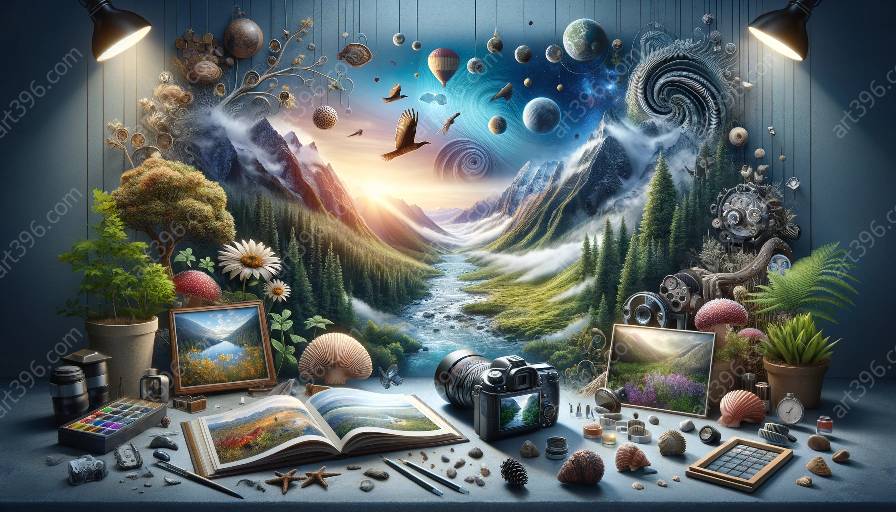Environmental photography combines the art of capturing the beauty of nature and conveying important environmental messages. One of the key elements that define the success of environmental photography is composition. In this topic cluster, we will delve into the significance of composition in environmental photography and explore the techniques and principles that photographers employ to create compelling and thought-provoking images.
Understanding Composition in Environmental Photography
Composition refers to the arrangement of visual elements within a photograph, including the placement of subjects, framing, use of lines, shapes, colors, and patterns. In environmental photography, thoughtful composition plays a crucial role in telling the story of the natural world and its conservation.
Key Principles of Composition
There are several key principles that photographers consider when crafting compositions in environmental photography:
- Rule of Thirds: The rule of thirds divides the image into nine equal parts using two equally spaced horizontal and vertical lines, emphasizing the placement of key elements along these lines or at their intersections to create a balanced and visually appealing composition.
- Leading Lines: Incorporating natural or man-made lines within the environment to guide the viewer's eye through the image, leading lines can create depth and convey a sense of exploration and harmony within the photograph.
- Foreground, Middleground, Background: Utilizing layers within the composition to create depth and engage the viewer's attention by incorporating distinct elements in the foreground, middleground, and background to convey a sense of visual storytelling and depth.
- Use of Color and Contrast: Leveraging the natural colors and contrasts within the environmental settings to evoke emotions and highlight the beauty and fragility of the natural world, thereby emphasizing the urgent need for its protection and preservation.
- Negative Space: Intentionally incorporating negative space to draw attention to the subject, create a sense of serenity, and emphasize the vastness and importance of the untouched natural landscape.
Visual Impact and Environmental Message
Effective composition in environmental photography not only serves to create visually stunning images but also plays a pivotal role in conveying powerful environmental messages. Through thoughtful composition, photographers can emphasize the beauty, diversity, and vulnerability of the environment, as well as the impact of human activities on the natural world.
Exploring Technological Advancements
With the advancement of digital arts and technology, environmental photographers are equipped with a wide range of tools and techniques to further enhance the impact of their compositions. From utilizing high-resolution cameras to employing post-processing techniques, photographers can amplify the visual impact of their environmental images, creating a powerful narrative that resonates with audiences worldwide.
Utilizing Digital Editing for Environmental Photography
Photographers proficient in digital arts can make use of advanced editing software to refine and enhance their compositions. From adjusting contrast and color balance to removing distractions and imperfections, digital editing tools provide photographers with the ability to fine-tune their images while staying true to the essence of the natural environment.
The Ethical Responsibility of Composition
While harnessing the power of composition to captivate audiences and convey environmental messages, photographers must also uphold their ethical responsibility. This includes avoiding the manipulation of images that could distort the reality of the environment and ensuring that the compositions authentically represent the natural world in its truest form.
Empowering Environmental Advocacy
By mastering the art of composition in environmental photography, photographers can become influential advocates for environmental conservation. Their images have the potential to inspire action, raise awareness, and foster a deep connection between viewers and the environment, ultimately contributing to positive change and sustainable practices.
Conclusion
The art of composition in environmental photography is a powerful tool for capturing the essence of the natural world and conveying compelling environmental messages. Through thoughtful arrangement of visual elements, adherence to key principles of composition, and ethical practice, photographers can create images that not only captivate the audience but also drive positive change and promote the preservation of our planet's precious ecosystems.



















































